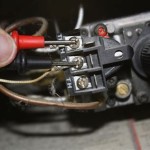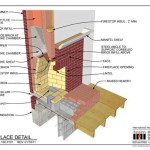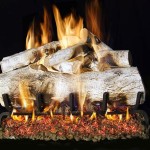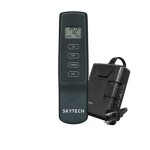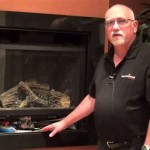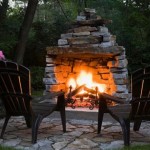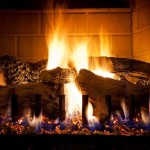Gas Fireplace Insert Reviews: A Comprehensive Guide
Gas fireplace inserts are a popular choice for homeowners looking to upgrade their existing wood-burning fireplaces. These inserts offer a convenient, efficient, and cleaner alternative, providing the ambiance of a traditional fire without the hassle of wood chopping, stacking, and ash removal. This article provides a comprehensive overview of gas fireplace inserts, outlining key factors to consider when selecting one and reviewing several models available on the market.
A gas fireplace insert is a self-contained unit designed to fit inside an existing fireplace opening. They operate using either natural gas or propane, and they vent exhaust gases through the existing chimney or a new venting system specifically installed for the insert. The inserts feature a realistic-looking flame pattern and often include features such as remote controls, thermostats, and blowers for enhanced heating capabilities.
Before exploring specific models, it is crucial to understand the factors influencing performance, reliability, and overall value. These considerations will help navigate the selection process and ensure the chosen insert meets individual needs and preferences.
Key Considerations When Choosing a Gas Fireplace Insert
Selecting the right gas fireplace insert involves assessing several crucial factors. Proper evaluation ensures the selected insert meets the homeowner's aesthetic preferences, heats the desired space effectively, and functions safely and reliably for years to come.
1. Heating Capacity and Efficiency: The primary function of a fireplace insert is to provide supplemental heat. Heating capacity is measured in British Thermal Units (BTUs). A higher BTU rating indicates the insert can heat a larger area. Determining the appropriate BTU rating for a specific space involves considering the square footage, insulation quality, and climate zone. Inserts commonly range from 20,000 to 40,000 BTUs, or more in some cases. The efficiency rating, expressed as a percentage, indicates how much of the fuel's energy is converted into usable heat. Higher efficiency ratings translate to lower operating costs and reduced energy consumption. Look for inserts with efficiency ratings of at least 70% or higher.
2. Venting Options: There are two primary venting systems for gas fireplace inserts: direct vent and B-vent. Direct vent systems are sealed combustion systems that draw air from outside the home and vent exhaust gases directly outside through a coaxial vent. This system is considered safer and more efficient because it does not rely on indoor air for combustion. B-vent systems, also known as natural vent systems, use the existing chimney to vent exhaust gases. B-vent systems are typically less efficient and require proper chimney construction and maintenance to ensure safe operation. The choice between direct vent and B-vent depends on existing chimney conditions, installation requirements, and budget constraints.
3. Aesthetics and Features: Gas fireplace inserts are available in a wide range of styles, finishes, and features. The aesthetic appeal of the insert should complement the existing décor. Consider the firebox design, log set appearance, and frame finish. Features such as remote controls, thermostats, adjustable flame height, and blowers can enhance convenience and functionality. Some models also offer decorative options such as glass media, stones, and accent lighting.
4. Safety Features: Safety is paramount when selecting a gas fireplace insert. Look for inserts with safety features such as oxygen depletion sensors (ODS), which automatically shut off the gas supply if oxygen levels in the room drop to unsafe levels. Ensure the insert is certified by a recognized testing agency such as UL (Underwriters Laboratories) or CSA (Canadian Standards Association). Proper installation by a qualified technician is also essential to ensure safe and reliable operation.
5. Budget and Installation Costs: The cost of a gas fireplace insert can range from a few thousand dollars to several thousand dollars, depending on the features, heating capacity, and venting system. Installation costs can also vary depending on the complexity of the installation, venting requirements, and any necessary modifications to the existing fireplace opening. Obtaining quotes from multiple installers is recommended to ensure a competitive price. Factor in the long-term operating costs, including fuel consumption and maintenance, when comparing different models.
Gas Fireplace Insert Models: A Selection of Popular Choices
The gas fireplace insert market includes numerous manufacturers and models, providing a diverse range of options to suit individual needs and budgets. The following provides an overview of a few popular models, highlighting their key features and performance characteristics. Note that these are examples and availability and specifications may vary.
1. Regency Bellavista P33 Gas Insert: The Regency Bellavista P33 is a popular direct vent gas insert known for its efficient heating and contemporary design. It features a large viewing area, realistic log set, and optional accent lighting. This model has a BTU range of 20,000 to 31,000 and offers an efficiency rating of up to 75%. Its remote control allows for easy adjustment of flame height and blower speed. The Regency Bellavista P33 is a good choice for homeowners seeking a stylish and efficient gas insert for medium-sized rooms.
2. Napoleon Ascent X 36 Gas Insert: The Napoleon Ascent X 36 is a direct vent gas insert known for its versatile design and innovative features. It features a clean-burning flame, realistic log set, and optional decorative media. This model has a BTU range of 22,000 to 30,000 and offers an efficiency rating of up to 70%. Its eFIRE remote control system allows for complete control over flame height, blower speed, and accent lighting. The Napoleon Ascent X 36 is a suitable option for homeowners seeking a customizable and energy-efficient gas insert.
3. Majestic Ruby 25 Gas Insert: The Majestic Ruby 25 is a B-vent gas insert designed for homeowners with existing chimneys. It features a traditional design, realistic log set, and built-in blower. This model has a BTU range of 20,000 to 25,000 and offers an efficiency rating of up to 65%. Its simple controls make it easy to operate. The Majestic Ruby 25 is a cost-effective option for homeowners looking to upgrade their existing wood-burning fireplace without extensive venting modifications.
4. Hearthstone Clydesdale 8031 Gas Insert: The Hearthstone Clydesdale 8031 is a direct vent gas insert with a soapstone lining, known for its radiant heat output and elegant design. It features a realistic log set and a large viewing area. This model has a BTU range of 18,000 to 38,000 and offers an efficiency rating of up to 72%. Its remote control allows for precise temperature and flame control. The Clydesdale is suited for homeowners who value both aesthetic appeal and radiant heating performance.
5. Lopi Evergreen Gas Insert: The Lopi Evergreen is a direct vent gas insert designed for zonal heating, with a focus on maximizing heat output. It has a simple, clean design and a realistic log set option. This model has a BTU range of 12,000 to 31,000 and offers a high efficiency rating of up to 79%. It includes a GreenSmart remote control and thermostat. This is a solid choice for those looking to supplement existing heating systems in a specific area.
Installation and Maintenance of Gas Fireplace Inserts
Proper installation and regular maintenance are crucial to ensure the safe and efficient operation of a gas fireplace insert. Installation should always be performed by a qualified technician certified in gas appliance installation. Incorrect installation can lead to gas leaks, carbon monoxide poisoning, and other safety hazards.
1. Installation Process: The installation process typically involves preparing the existing fireplace opening, running gas lines, installing the venting system, and connecting the insert. The technician will also test the insert to ensure it is functioning properly and safely. Direct vent installations may require cutting through an exterior wall to route the venting system. B-vent installations require inspection of the existing chimney to ensure it is in good condition and properly sized for the insert.
2. Annual Maintenance: Annual maintenance is essential to ensure the insert continues to operate safely and efficiently. Maintenance typically includes inspecting and cleaning the burner, pilot light, and venting system. The technician will also check for gas leaks and inspect the oxygen depletion sensor. Regular cleaning of the glass door is also recommended to maintain a clear view of the flames.
3. Troubleshooting Common Issues: Common issues with gas fireplace inserts include pilot light problems, burner malfunctions, and venting obstructions. Pilot light problems can often be resolved by cleaning the pilot assembly or adjusting the gas pressure. Burner malfunctions may require replacing the burner or cleaning the gas orifices. Venting obstructions can be caused by debris buildup or animal nests. Addressing issues promptly can prevent further damage and ensure continued safe operation.
4. Professional Inspection: It is recommended to have the gas fireplace insert inspected by a qualified technician at least once a year, even if it appears to be functioning properly. A professional inspection can identify potential problems before they become major issues and ensure the insert is operating safely and efficiently.
5. Safety Precautions: Always follow the manufacturer's instructions and local codes when operating and maintaining the gas fireplace insert. Never attempt to repair or modify the insert yourself unless you are a qualified technician. Install carbon monoxide detectors in the home and test them regularly. Ensure that the area around the fireplace is clear of flammable materials. If you smell gas, immediately turn off the gas supply and evacuate the area.
Selecting the right gas fireplace insert involves careful consideration of heating capacity, venting options, aesthetics, safety features, and budget. Proper installation and regular maintenance are essential to ensure safe and reliable operation. Researching different models and consulting with qualified professionals can help homeowners make informed decisions and enjoy the warmth and ambiance of a gas fireplace insert for years to come.

Kingsman Clean View Gas Fireplace Insert Review Fireplaces Direct Learning Center

Reviews For Duluth Forge Dual Fuel Ventless Gas Fireplace Insert 32 000 Btu T Stat Control Model Fdf400t Zc Pg 1 The Home Depot

Reviews For Pleasant Hearth Universal Circulating Zero Clearance 32 In Ventless Dual Fuel Fireplace Insert Pg 1 The Home Depot
.aspx?strip=all)
Top 11 Gas Fireplace Insert Trends Of 2024

Chaska 34 Gas Fireplace Insert Kozy Heat

Procom 26 000 Btu Vent Free Dual Fuel Propane And Natural Gas Indoor Fireplace Insert With T Stat Control 170082 The Home Depot

Best Gas Fireplace Inserts Fireplaces Direct Learning Center

Gas Fireplace Insert Cost Forbes Home

Reviews For Duluth Forge Dual Fuel Ventless Gas Fireplace Insert 26 000 Btu Remote Control Fdf300r Pg 1 The Home Depot

Enviro Gas Insert E33 E33g Sie33s2 Capo Fireside
Related Posts

